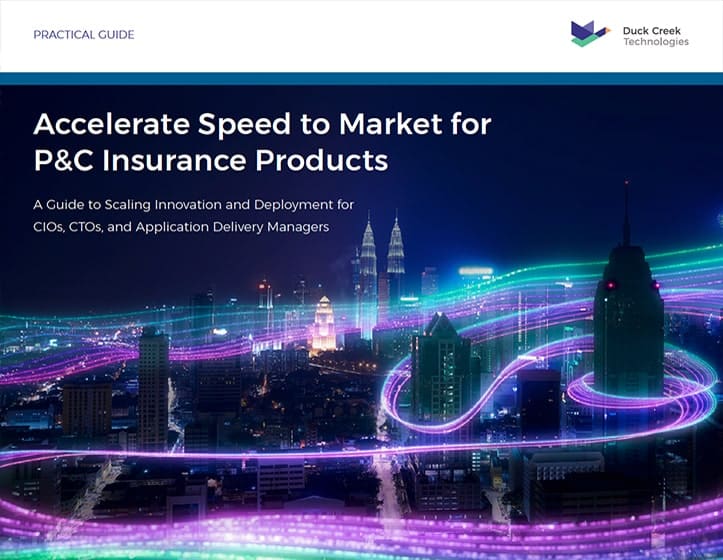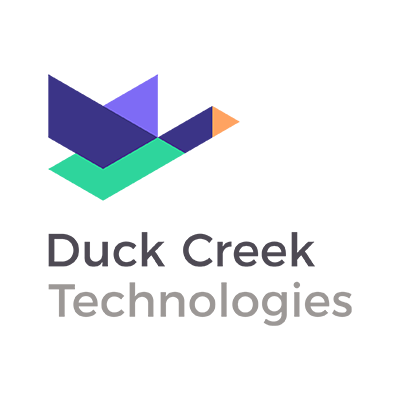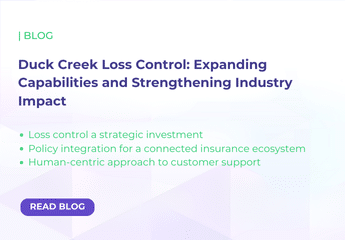There is no asset more valuable in the insurance industry than data. Because it informs nearly every process — underwriting, risk assessment, new business, and more — having quality data is of the utmost importance to insurance carriers.
Traditionally, carriers relied on readily available information, such as tax history or driving records, to determine policies and pricing for their customers. But today, carriers have access to the most personalized information ever available about customer behavior. This means that they have the most accurate data to better determine risk and price and deliver optimal customer experiences.
So, what turned the tide in insurance data gathering? It’s simple: telematics and the Internet of Things (IoT).
What is Telematics in Insurance?
Telematics, in the broad sense, is defined as “a method of monitoring cars, trucks, equipment and other assets by using GPS technology on-board diagnostics (OBD) to plot the asset’s movements on a computerized map.” For insurance applications, these movements are monitored to paint a complete picture of driver behavior and inform insurers about the driving habits of their insureds.
Insurance telematics started out as a strictly automotive feature, where drivers would consent to using a device to monitor their driving habits in exchange for a lower insurance price. The idea was that insurers would be able to get the most accurate information about a driver’s behavior and would reward their safe driving with lower rates. These devices could even alert owners if their vehicle had a maintenance issue to protect the car from any further damage. “This is largely still the case, but telematics technology has far surpassed the early days of the Progressive Snapshot and is moving beyond the automotive insurance vertical.”
Property telematics is the next frontier of telematics in the insurance industry. And while these programs are still in their infancy, they promise to help spur the growth of telematics programs and create new opportunities for carriers to deliver optimal experiences to their customers. In fact, telematics is expected to boom in the coming years: industry experts forecast that the use of telematics may grow to 20% within the next five years.
How Insurance Telematics Improves Customer Satisfaction
- More Accurate & Competitive Pricing
Because telematics data paints a complete picture of driver behavior, insurers can more accurately price their risk. In turn, insurers get substantial profitability benefits because they are better able to properly match rate to risk.
Accurate risk assessment and pricing also means insurers can offer more competitive prices; the benefits of more accurate pricing are passed to the consumer. This creates a virtuous circle; as the carrier gets financial benefit, they can encourage customers to enroll in this benefit, and then drivers are urged to pay for this benefit. This structure creates a competitive advantage for insurance carriers who use telematics, as they can offer lower rates and get customers who are lower risk, more careful, and ultimately safer on the roads.
- Improved Pricing Transparency
The beauty of telematics programs, especially in automotive insurance, is that they create a transparent feedback loop to show drivers how their risk influences their price. This also gives insurers the ability to have a better relationship with their customers, as the two parties can discuss the specific reasons for their rates. By having an open line of communication and explaining to customers what risks are influencing their price, this brings opportunity for fairness and clarity around pricing.
- Can Mitigate Repairs
A good friend will stop you from stepping on gum that you don’t see or save you from embarrassment by letting you know there’s something in your teeth. With telematics data, insurance companies can be that good friend to their customers.
With automotive telematics data, insurers collect vehicle performance data and can alert drivers to performance issues or parts that will soon need maintenance. Property telematics works in a similar fashion, as sensors are typically placed around the most sensitive areas of the home such as basements, under sinks, and near water heaters or furnaces. With this telematics data, insurers can alert their customers that their boiler is about to go, saving them from the unpleasant surprise of no hot water.
- Create a Closer Relationship with Customers
When you think about property telematics, specifically, these programs require people to voluntarily put sensors in the home. By definition, the homeowner has to invite the insurer into the home, which is a unique concept for a carrier. Typically, insurers don’t go into a customer’s home; property telematics programs change the dynamic between the carrier and the policyholder and create a much more personal and open relationship.
- Coach Ideal Behaviors
Because of the added price transparency and personalized service customers receive through a telematics program, insurers can motivate customers to achieve their goals through timely nudges. An insurer using telematics can provide constructive feedback with customers, potentially in real time, giving them opportunities to improve their pricing. “You can save x% on your premium by changing y behavior.” This creates a fundamentally different touchpoint for insurance organizations when it comes to customer relationships.
- Improve Customer Engagement
When you combine many of the aforementioned benefits — improved pricing transparency, personalized service, open customer communication, and a closer insurer/customer relationship — the result is bound to be improved customer engagement. With telematics programs, insurance customers get to be active participants in their insurance underwriting process. They reduce their risky behaviors, get coached on their behavior, and even find out about repairs or issues before they occur. From the perspective of an insurance company, this would be an ideal level of customer engagement.
Telematics Solutions Available in the Insurance Industry
Auto Telematics Solutions
Arity
Arity is a mobility data and analytics company that offers end-to-end insurance telematics solutions to help carriers evaluate driving risk and uncover valuable insights. Arity’s solutions combine data collection, actuarial scoring, program implementation, and support into one comprehensive solution to help you identify and retain preferred drivers, better anticipate loss, and price more accurately.
Arity’s mission is to make transportation smarter, safer, and more useful for everyone. They understand that how insurers engage with the end-user is one thing, but just as important to any telematics program is the score and analytics that insurers use with that data. To achieve that, Arity uses a mobile score called Drivesight that is built on more telematics data with associated loss cost data than any other program on market. Using Drivesight, carriers can improve the loss ratio by more than 50% on the highest-risk drivers and improve retention on less risky drivers.
Looking forward, Arity is now rolling out an advanced telematics offering called Arity IQ SM, which allows insurers to get a driving score on a person shopping for insurance before they buy. Insurers can instantly query Arity’s tens of millions of connections and incorporate the actual driving risk of an individual consumer in their quote funnel in real time. This not only enables insurers to provide more accurate pricing at the beginning of the customer relationship, but they can even identify low risk drivers to offer more competitive prices. It also gives insurers opportunity to look at score, see someone who is risky, and see what factors make them a risk to inform pricing to cover predicted losses.
Cambridge Mobile Telematics (CMT)
Cambridge Mobile Telematics (CMT) is the world’s largest mobile telematics provider for serving insurers, fleets, rideshares, and mobility customers. Through their smartphone-based telematics platform, CMT has helped engage drivers and reduce risky behavior by 40%. CMT’s solutions use mobile sensing, IoT, artificial intelligence, and behavioral science to reduce costs, improve industry processes, and enhance the customer experience for higher brand loyalty. And, as the largest telematics organization, CMT has access to the highest volume and most accurate data, meaning their telematics program delivers carriers the highest level of detail.
As telematics becomes increasingly popular, CMT is most excited about a few of its features. First, if a driver gets in a crash, CMT’s platform can use their data to pinpoint the location of the crash within 30 seconds. This empowers the carrier to provide immediate assistance and emergency support can be dispatched to the scene. CMT is also excited about the growing trend of telematics rewards programs. A number of insurers are offering rewards programs that give drivers gifts or discounts on their policy for not driving distracted. On top of optimal pricing structures driven by telematics data, insurers are now sweetening the deal by rewarding safe behavior.
Verisk
Verisk is a leading source of information about insurance risk. To serve their clients, they draw upon their vast experience in data management and our expertise in predictive modeling. In the auto telematics space, that presents itself a little differently than traditional telematics programs through the Verisk Data Exchange and its’ network of automakers and connected vehicles with embedded telematics
Traditional telematics data was collected on an aftermarket device or mobile app that tracked how you drive post-bind. Meanwhile, drivers got a generic participation discount not actually based on their own driving during an observation period. Verisk is fundamentally different because they provide normalized behavioral or mileage data sourced directly from connected vehicles. After customers agree to share that data; Verisk continuously collects that information and makes it available to carriers at the point of quote through their DrivingDNA products. So, when an applicant begins a quote, the insurer can access detailed driving insights – either as a data package for use with proprietary scoring models or through Verisk’s pre-filed score – allowing them to calculate a discount based on past behavior without the observation period. It’s a personalized discount delivered in near-real time, upfront during the quote flow.
Verisk believes that the next evolution of telematics will expand carrier marketing and new business initiatives. In terms of lead acquisition, insurers can connect car driving data to anonymously identify low-risk or low-mileage customers and then market to those consumers through their automaker’s digital ecosystems or online owners’ platforms. Telematics data will also allow for more dynamic pricing, so some insurers can offer variable pricing on more frequent cadence using driving behavior insights delivered on an ongoing basis post-bind.
Property Telematics Solutions
Roost
Roost is a technology company focused on disrupting the traditional property insurance model through a property telematics approach. Roost’s cloud-based solutions use in-home smart sensors that monitor a wide range of data elements from inside properties in real time. Their smoke alarm listeners and smart water leak and freeze detectors provide peace of mind to property owners and rich data to insurers to improve pricing and risk assessment.
Roost works by putting sensors in places where there is the highest risk of peril — water heater, kitchen sink, and so on. Where Roost differentiates themselves is in how easy their platform is to use. We tend to think that telematics is relatively simple — users just download an app and connect their devices to Wi-Fi. However, the average homeowner doesn’t know how to do these things and need lots of technological support. So, to make their telematics solutions as simple as possible, Roost’s sensors automatically connect to cellular data, which allows end users to just plug in the device and go, much like you would with a toaster or lamp.
Property telematics is still in its infancy, but many expect these programs to become a must-have when buying property insurance. Not only will this data better inform underwriting and pricing, but it’s also intuitive — instead of guessing what’s going on in a home or what might happen, property telematics can deliver a real-time data stream about what is happening in the home and any risks that occur. This gives owners alerts and a mechanism to act on, and peace of mind that their insurer is also looking out for them.




